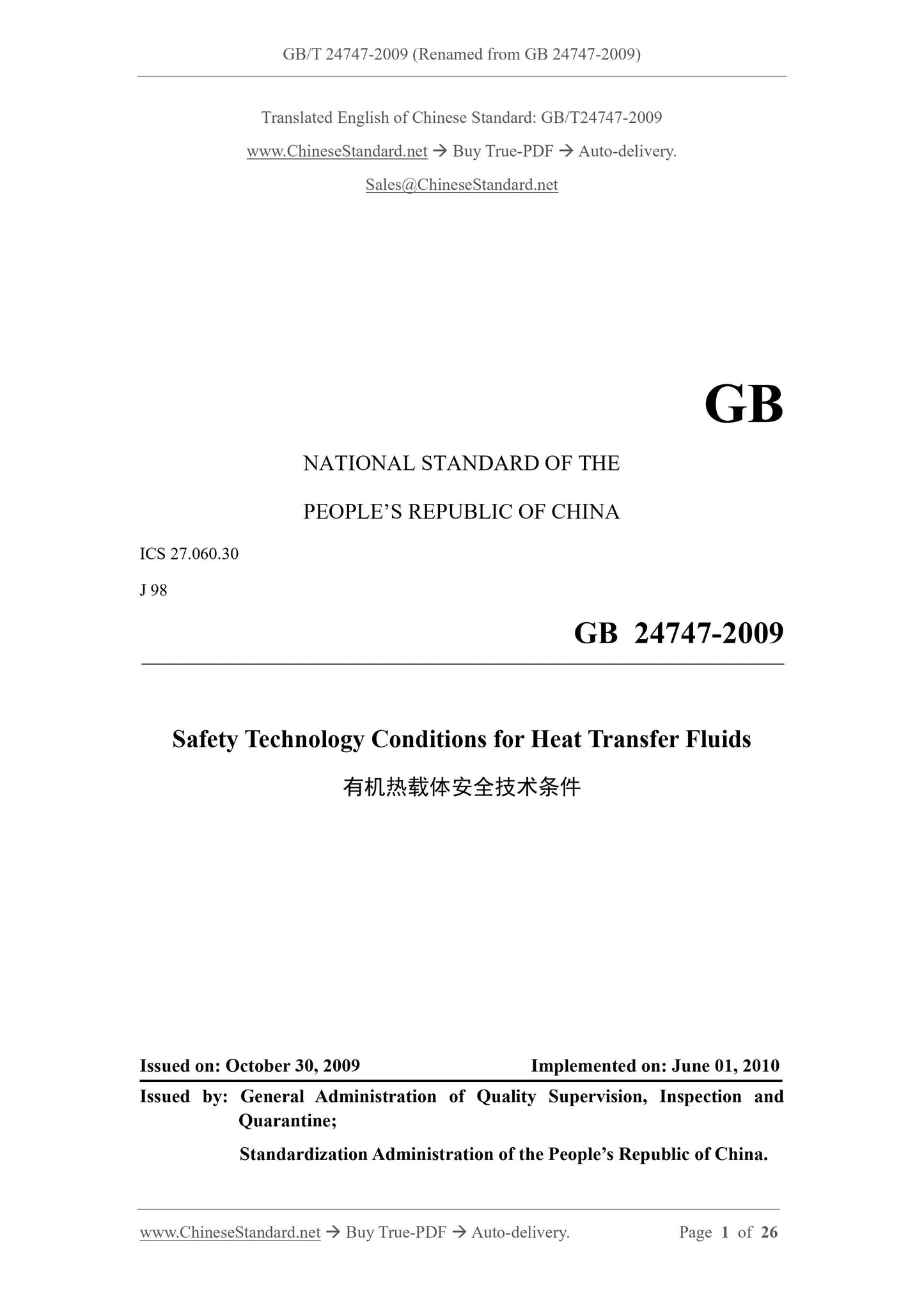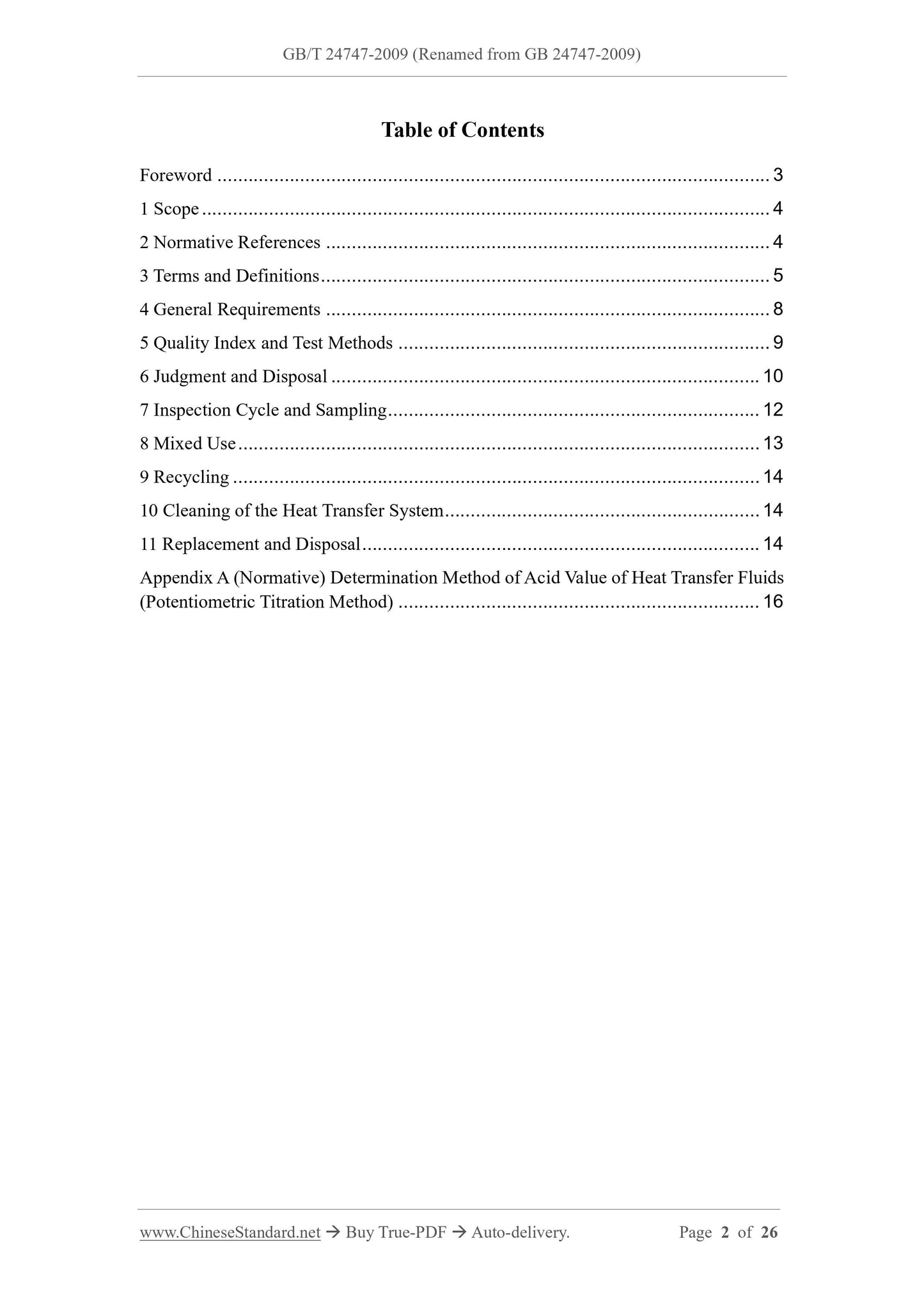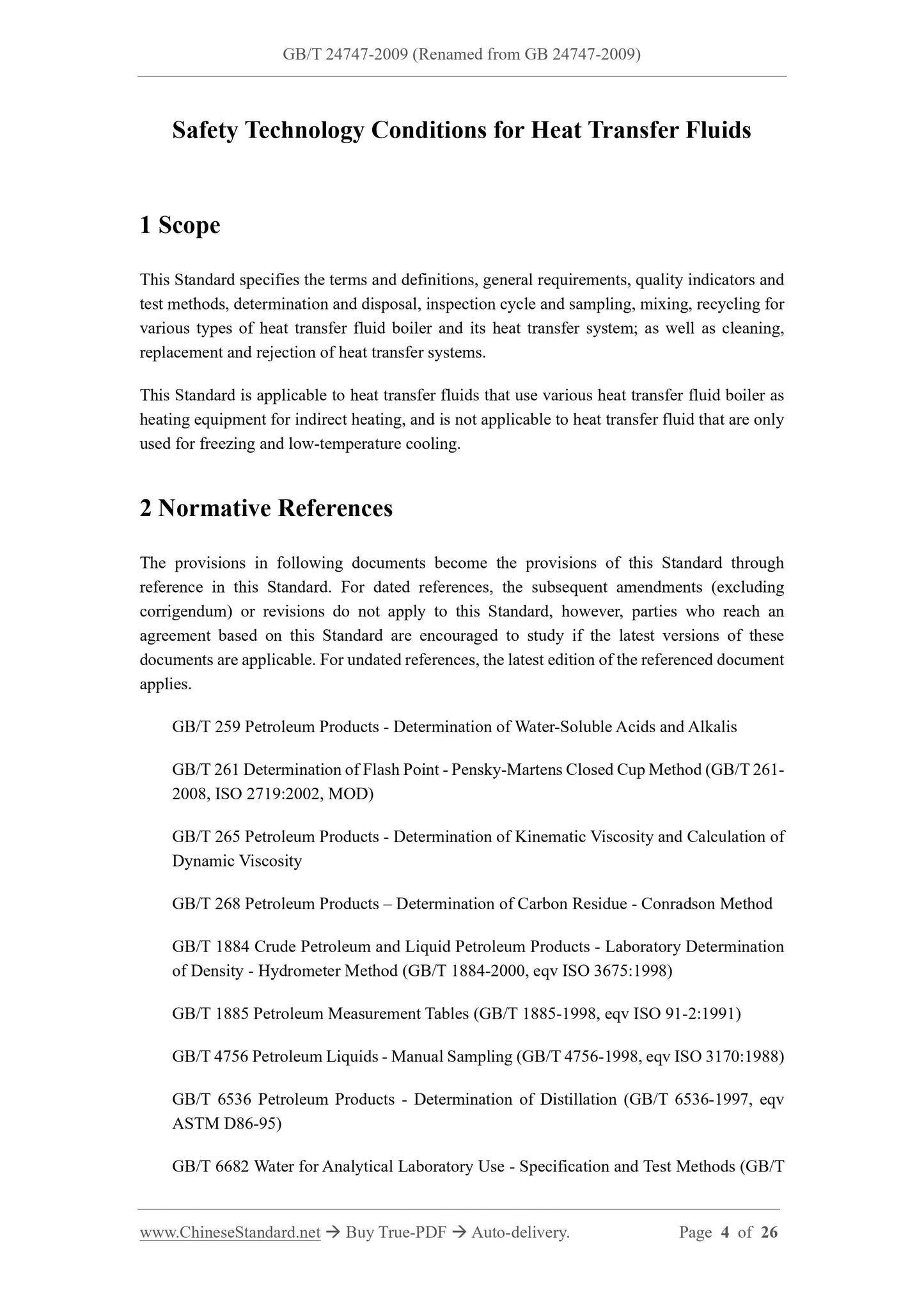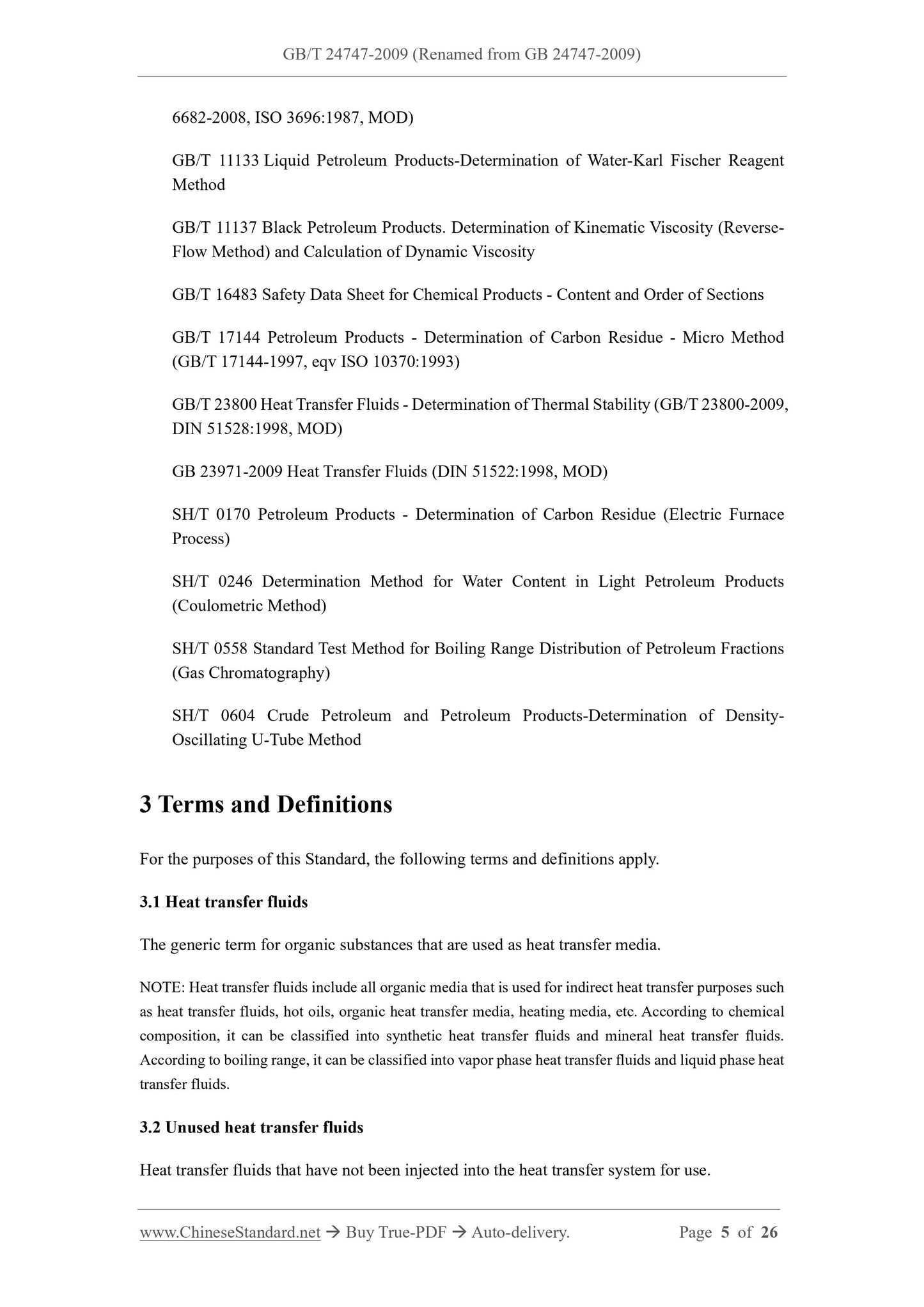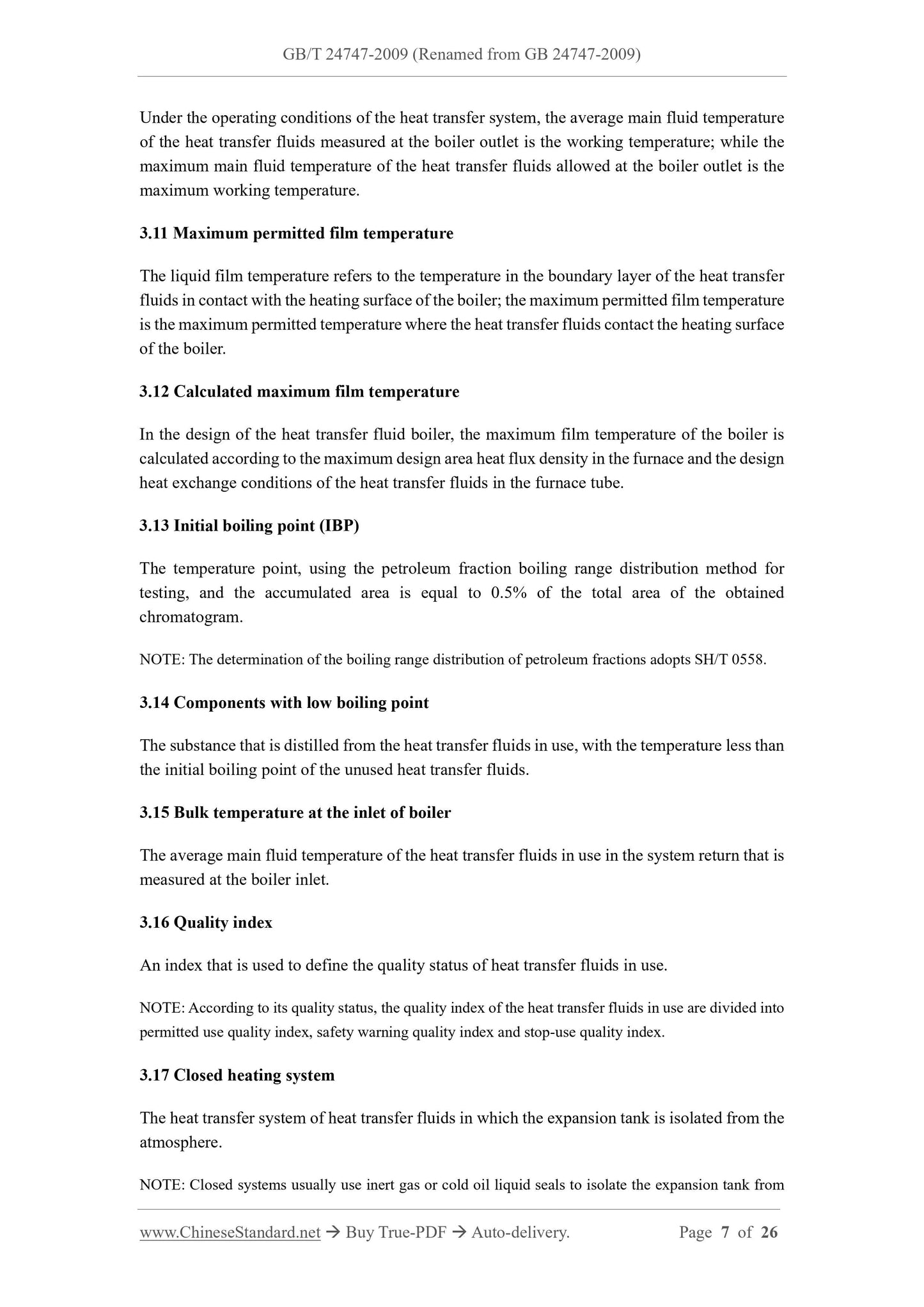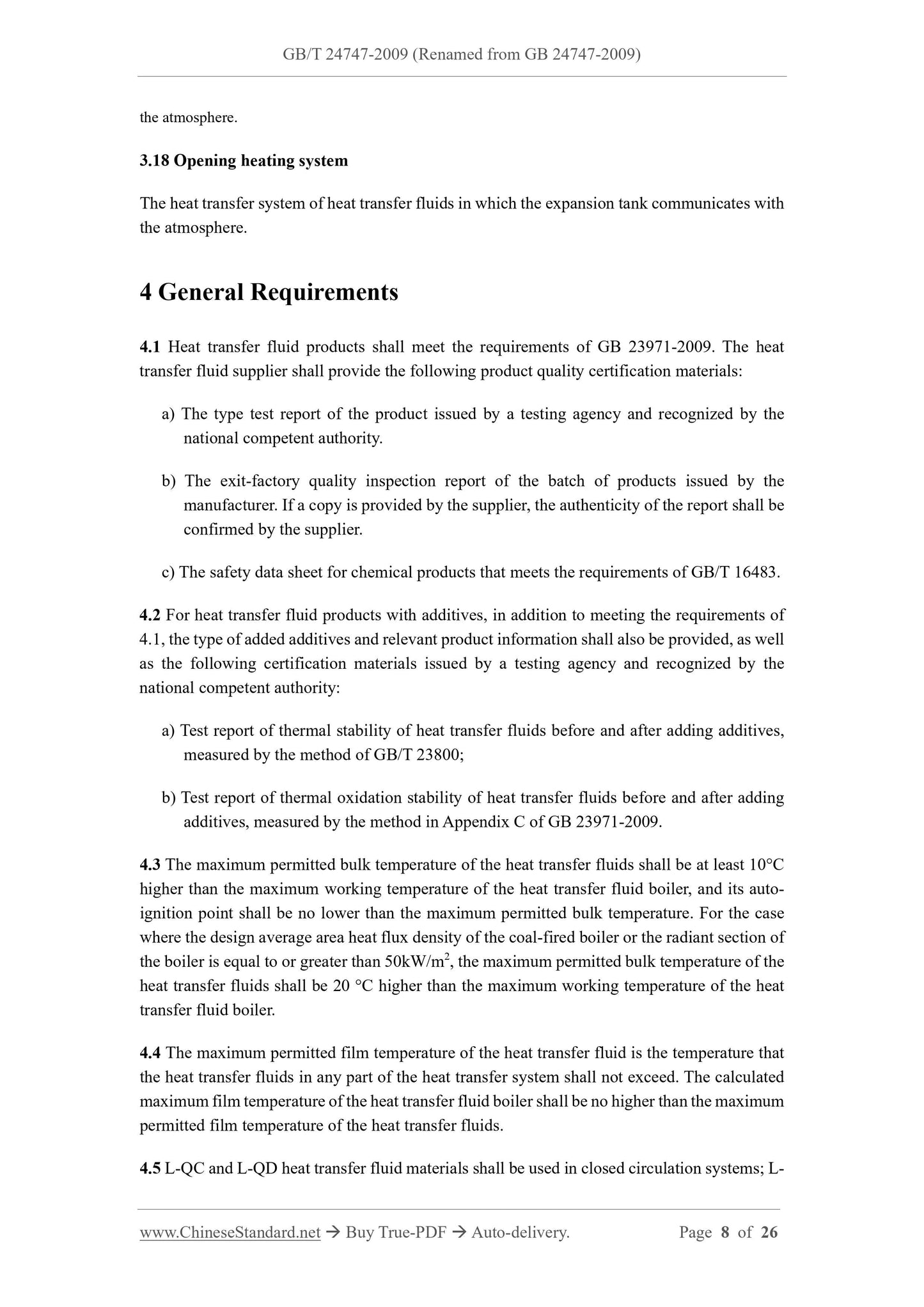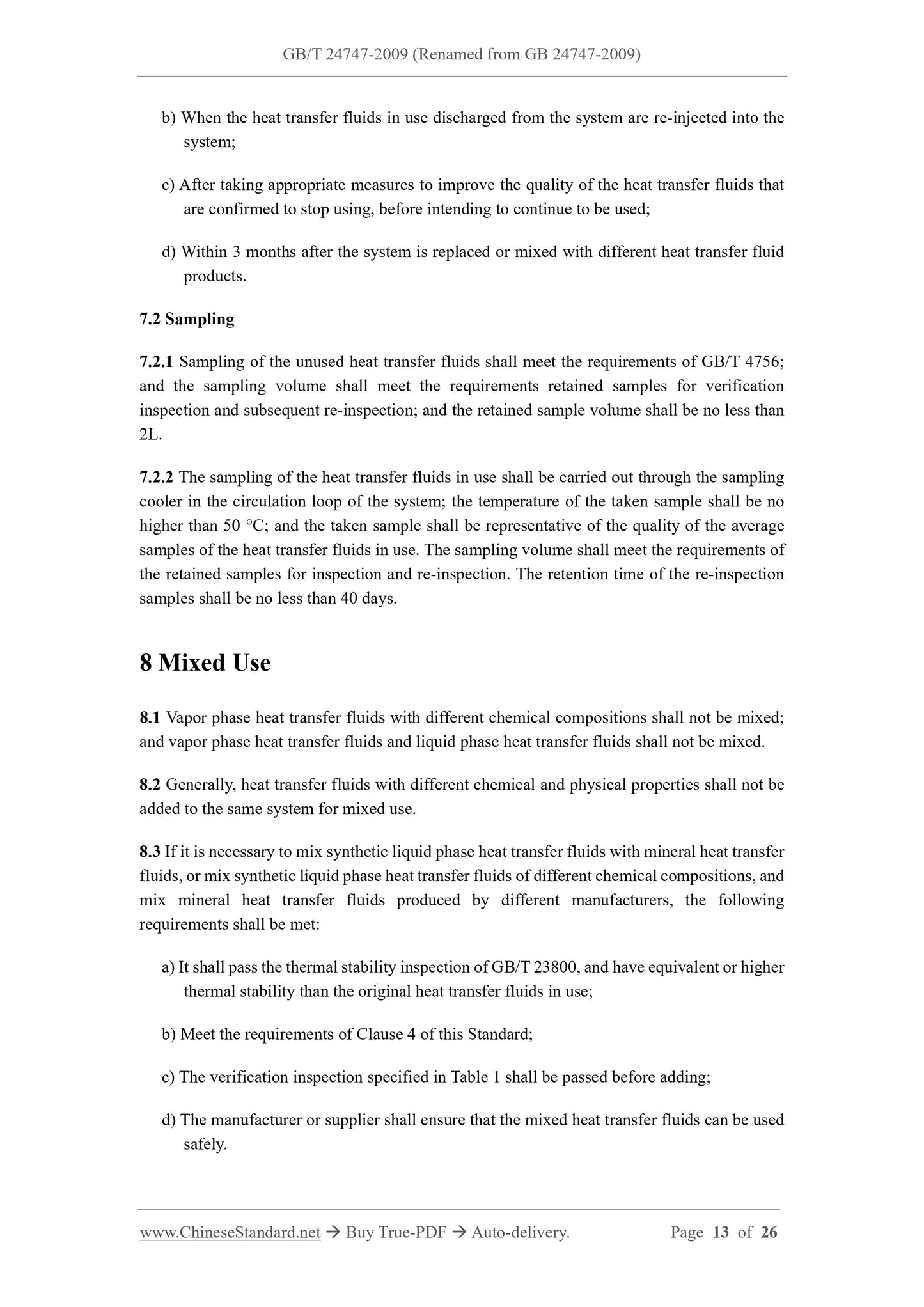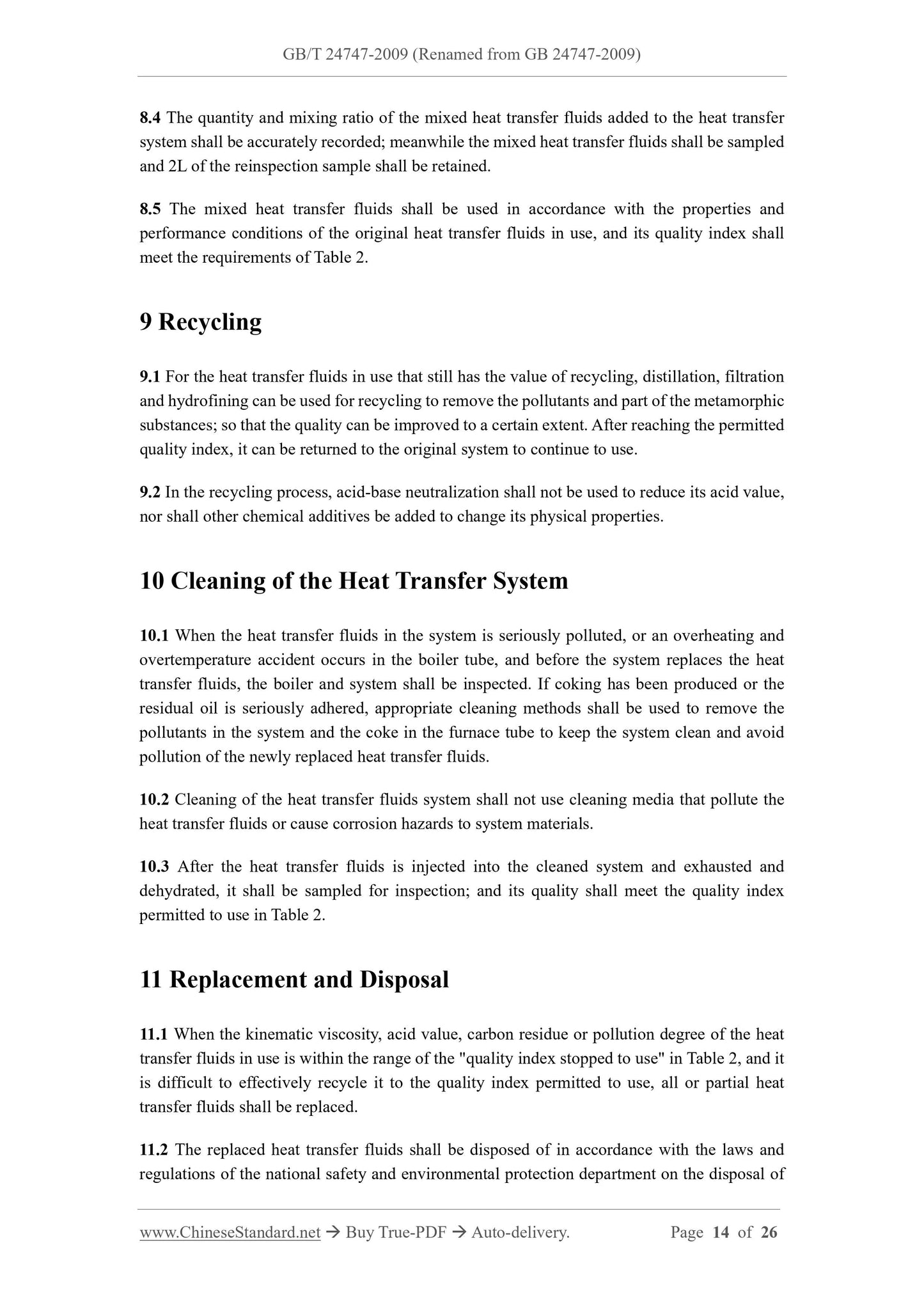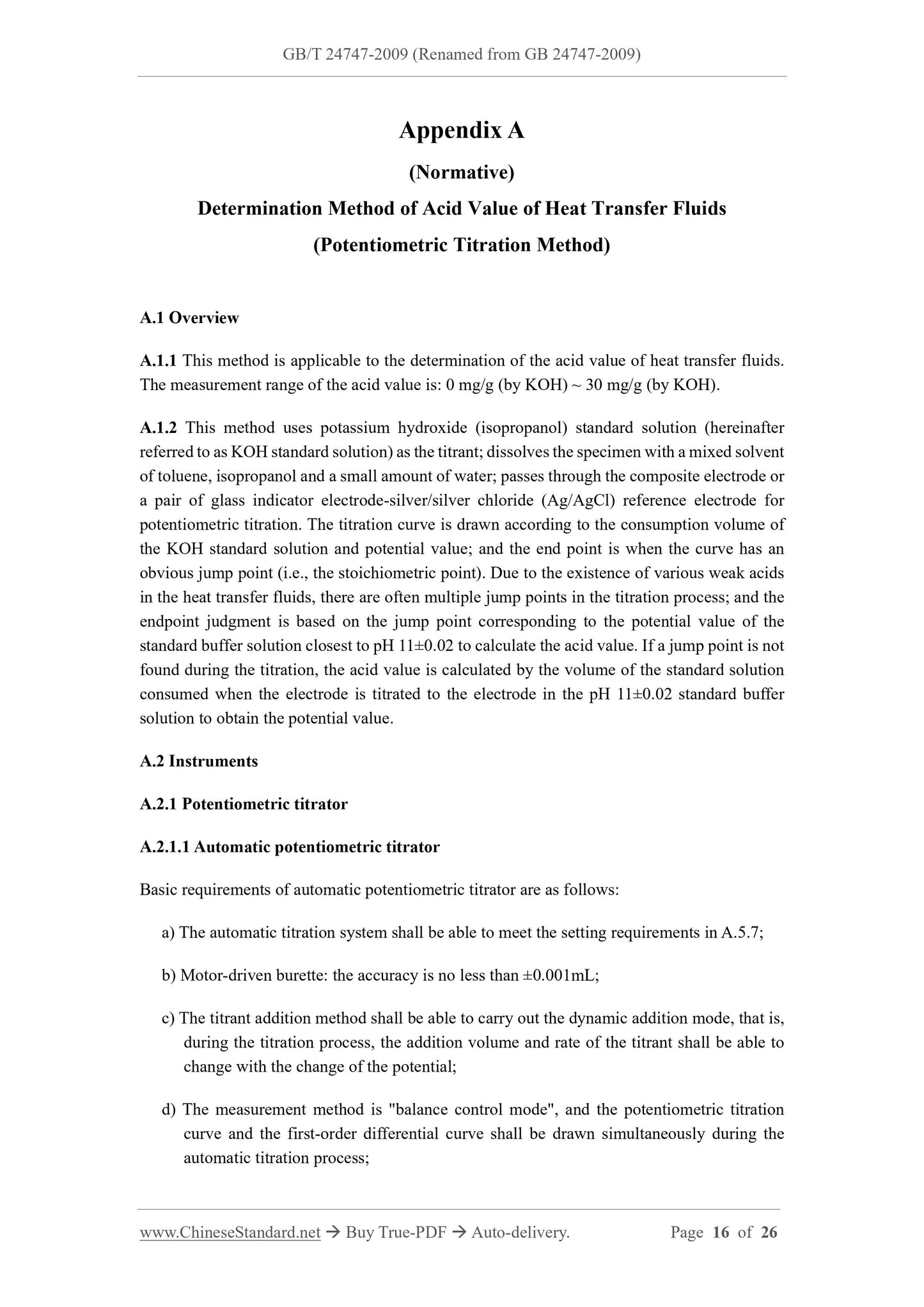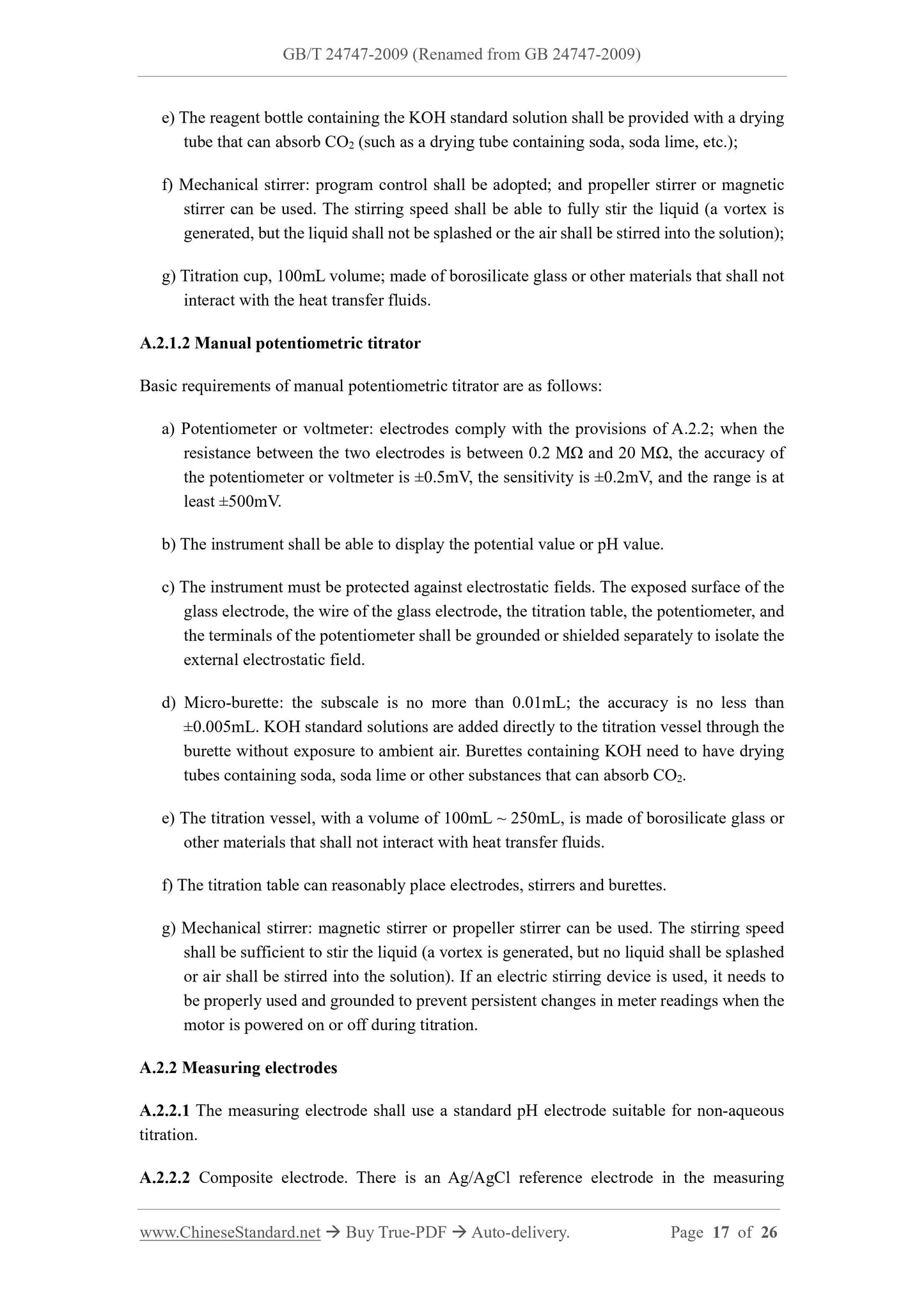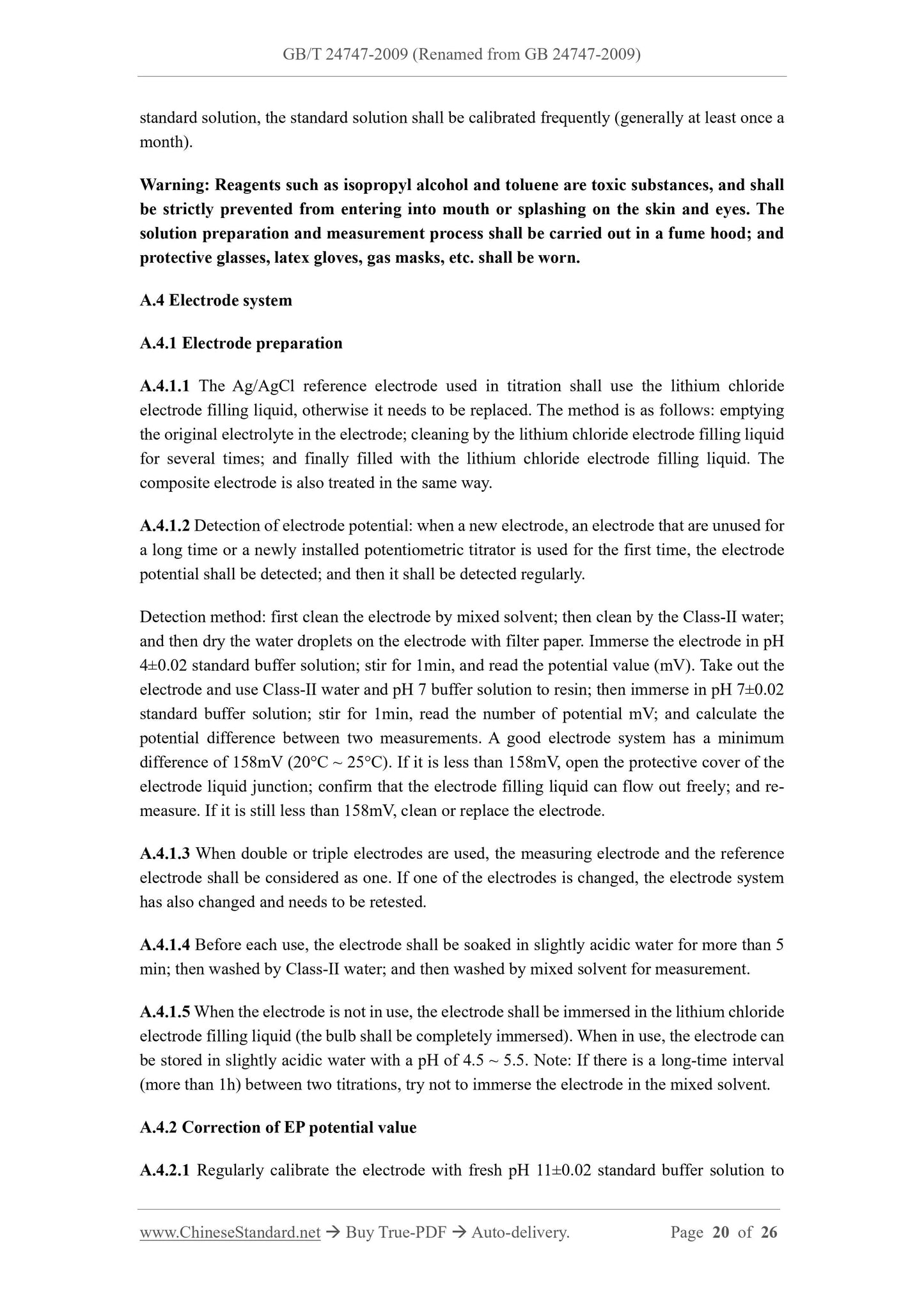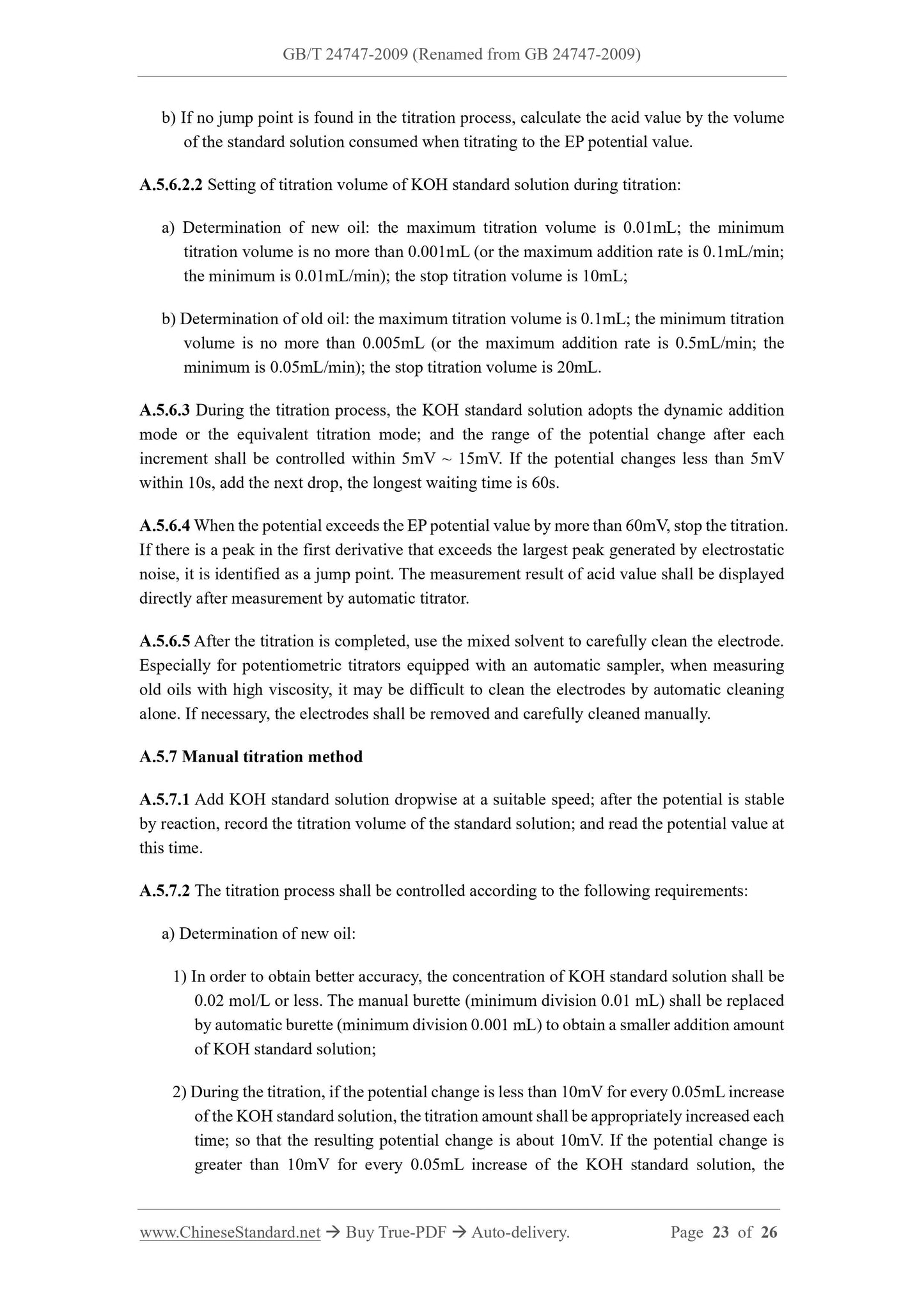1
/
of
12
PayPal, credit cards. Download editable-PDF & invoice In 1 second!
GB 24747-2009 English PDF
GB 24747-2009 English PDF
Regular price
$255.00
Regular price
Sale price
$255.00
Unit price
/
per
Shipping calculated at checkout.
Couldn't load pickup availability
GB 24747-2009: [GB/T 24747-2009] Safety technology conditions for heat transfer fluids
Delivery: 9 seconds. Download (and Email) true-PDF + Invoice.Get Quotation: Click GB 24747-2009 (Self-service in 1-minute)
Newer / historical versions: GB 24747-2009
Preview True-PDF
Scope
This Standard specifies the terms and definitions, general requirements, quality indicators andtest methods, determination and disposal, inspection cycle and sampling, mixing, recycling for
various types of heat transfer fluid boiler and its heat transfer system; as well as cleaning,
replacement and rejection of heat transfer systems.
This Standard is applicable to heat transfer fluids that use various heat transfer fluid boiler as
heating equipment for indirect heating, and is not applicable to heat transfer fluid that are only
used for freezing and low-temperature cooling.
Basic Data
| Standard ID | GB 24747-2009 (GB24747-2009) |
| Description (Translated English) | [GB/T 24747-2009] Safety technology conditions for heat transfer fluids |
| Sector / Industry | National Standard |
| Classification of Chinese Standard | J98 |
| Classification of International Standard | 27.060.30 |
| Word Count Estimation | 17,150 |
| Date of Issue | 2009-10-30 |
| Date of Implementation | 2010-06-01 |
| Quoted Standard | GB/T 259; GB/T 261; GB/T 265; GB/T 268; GB/T 1884; GB/T 1885; GB/T 4756; GB/T 6536; GB/T 6682; GB/T 11133; GB/T 11137; GB/T 16483; GB/T 17144; GB/T 23800; GB/T 23971-2009; SH/T 0170; SH/T 0246; SH/T 0558; SH/T 0604 |
| Adopted Standard | DIN 51529, NEQ |
| Regulation (derived from) | Announcement of Newly Approved National Standards No. 13 of 2009 (No. 153 overall) |
| Issuing agency(ies) | General Administration of Quality Supervision, Inspection and Quarantine of the People's Republic of China, Standardization Administration of the People's Republic of China |
| Summary | This Chinese standard specifies the types of organic heat carrier boiler and heat transfer system used by organic heat of terms and definitions, general requirements, quality indicators and test methods, determination and processing, inspection cycle and sampling, mixing, recycling, heat transfer system cleaning, replacement and disposal. This standard applies to a variety of organic heat carrier boiler for the heating equipment, and indirect heating for the purpose of organic heat carrier, does not apply to only a very low freezing and cooling for the purpose of organic heat carrier. |
Share
